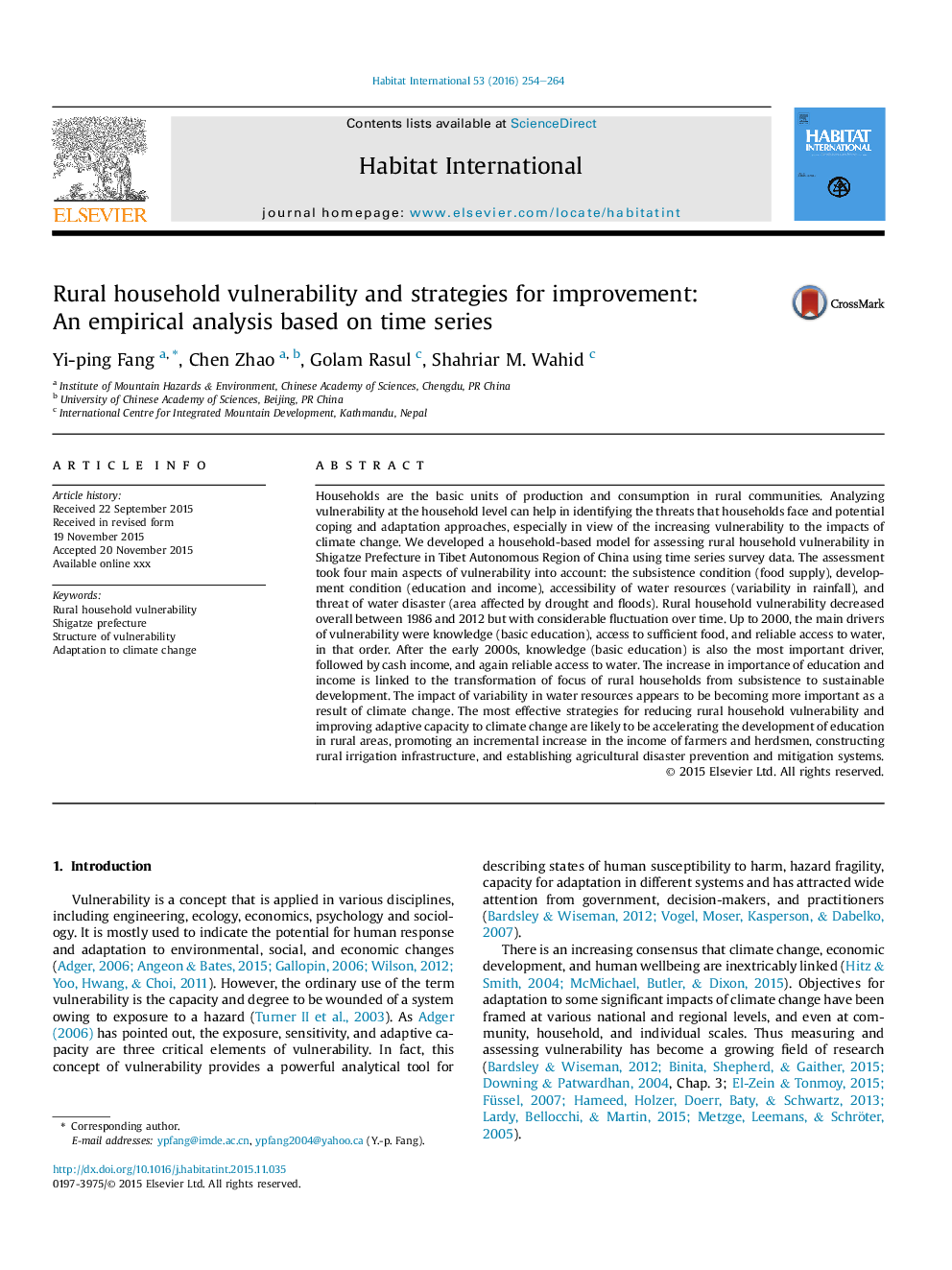| Article ID | Journal | Published Year | Pages | File Type |
|---|---|---|---|---|
| 7455627 | Habitat International | 2016 | 11 Pages |
Abstract
Households are the basic units of production and consumption in rural communities. Analyzing vulnerability at the household level can help in identifying the threats that households face and potential coping and adaptation approaches, especially in view of the increasing vulnerability to the impacts of climate change. We developed a household-based model for assessing rural household vulnerability in Shigatze Prefecture in Tibet Autonomous Region of China using time series survey data. The assessment took four main aspects of vulnerability into account: the subsistence condition (food supply), development condition (education and income), accessibility of water resources (variability in rainfall), and threat of water disaster (area affected by drought and floods). Rural household vulnerability decreased overall between 1986 and 2012 but with considerable fluctuation over time. Up to 2000, the main drivers of vulnerability were knowledge (basic education), access to sufficient food, and reliable access to water, in that order. After the early 2000s, knowledge (basic education) is also the most important driver, followed by cash income, and again reliable access to water. The increase in importance of education and income is linked to the transformation of focus of rural households from subsistence to sustainable development. The impact of variability in water resources appears to be becoming more important as a result of climate change. The most effective strategies for reducing rural household vulnerability and improving adaptive capacity to climate change are likely to be accelerating the development of education in rural areas, promoting an incremental increase in the income of farmers and herdsmen, constructing rural irrigation infrastructure, and establishing agricultural disaster prevention and mitigation systems.
Keywords
Related Topics
Social Sciences and Humanities
Social Sciences
Development
Authors
Yi-ping Fang, Chen Zhao, Golam Rasul, Shahriar M. Wahid,
